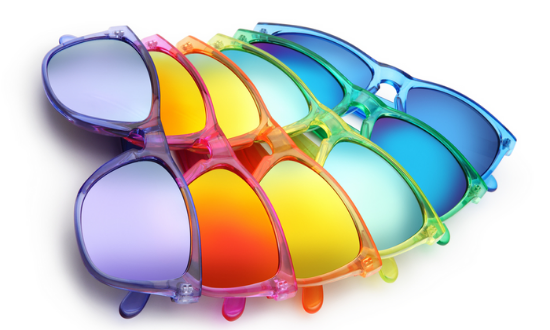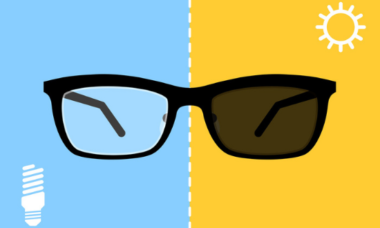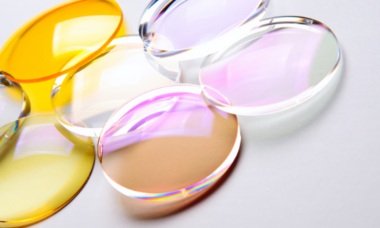Light transmission from the spectacle lens depends upon the transparency, thickness, and index of the lens.
The quality of the lens should be such that near to 100 percent transmission could be achieved but when light travels from one medium to another some of the rays are reflected back hence it is hard to achieve.
Lens manufacturers and their researchers keep updating the quality of lenses to attain higher light transmission through their products. In the case of a color lens, if the color is dark, light cannot be transmitted completely.
Earlier there was a trend of tinted glasses for spectacles. Pink, blue and yellow tints were most commonly used. When light rays travel from different color lenses its nature of frequency and wavelength also changes. To understand how colors affect the transmission of light we need to understand the Light.
Light originating from the source is made up of various wavelengths. Different wavelengths have different frequencies. By now most of us will be reminiscing nostalgic moments from science class in school. Certainly, we need to dip into the Physics book to revise the Electromagnetic light spectrum.
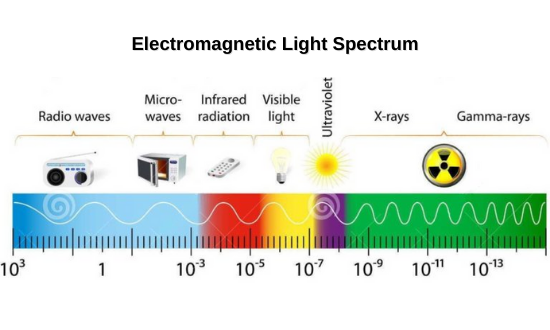
Light waves consist of fluctuating electric and magnetic fields and their properties depend upon speed, wavelength, and frequency. The formula to calculate speed is a product of wavelength and frequency.
Speed = W (Wavelength) x F (Frequency)
Here wavelength is the distance between two adjacent endpoints of a wave and frequency refers to the number of waves.
Most rays in the spectrum are not harmful such as visible light range. Although the blue light range which is closer to the UV range is considered harmful. To prevent from its side effects, various products range already exists in the market. Other ranges such as the Ultra-Violet range can be potentially harmful.
While the speed of all ranges remains the same in the vacuum but their frequency and wavelengths certainly differ hence its effects are also different. Wavelengths are measured in nm.
(Nm = 1/1000000000 meter)
- Cosmic rays: 0 to 0.001 nm
- X rays: .001 to 100 nm
- UV rays: 100 to 390 nm
- Visible rays: 391 to 760 nm
- Infrared rays: 760 to 1000 nm
These rays are present in the atmosphere. When they travel through the lens its dispersion depends on the base index of the lens and its color. Each color depending on its functionality can impact the vision based on which it can be used at different hours of the day.
Pink Color
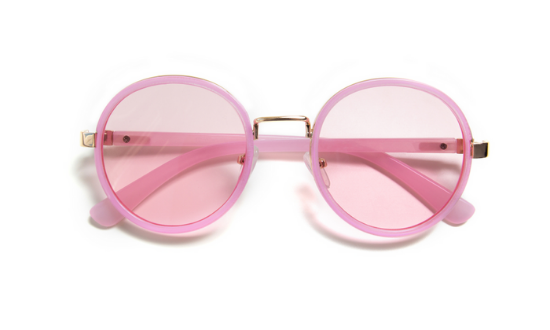
The visible light range of the electromagnetic light spectrum travels at the same frequency through the pink color lens. Having said so, the distortion is near zero. These are best for night driving purposes or where there is too much light indoors. If you are looking for glasses to wear especially for night driving then pink is your color. For indoors SP2 would be best suggested, darker shade might not be as comfortable. If top coated with an Anti-reflective coating (commonly known as ARC ), further glare-free vision can be achieved. The red color is the most preferred choice of cricketers. Spotting the ball in such open light is difficult. Red adds contrast while reducing glare and makes it easy for cricketers to spot the ball in green background.
- Distortion-free vision
- Cuts glare
- Best for night driving
- The tone of red most preferred in sports
Yellow Color
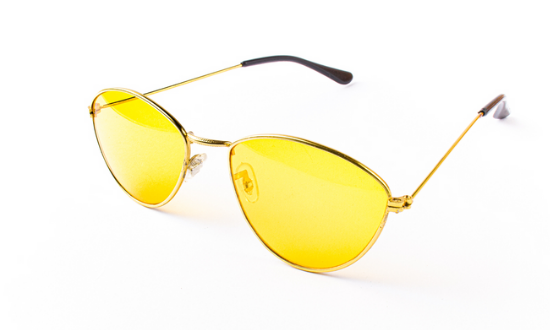
The best use of yellow lenses is to prevent blue light or screen light emitted from digital devices. This color absorbs blue light and is often available in ready-to-wear spectacle frames. Along with that it also adds to color contrast which is why it can also be used for night driving. Moreover, these are most suitable for mountaineers, skiers, sportspersons, pilots, shooters, etc. Many of the ready-to-wear driving goggles also come with a yellow color lens. This is because yellow color increases color contrast giving sharper vision.
- Filters blue light
- Reduces glare
- Commonly used as driving goggles
- Sharper vision
Grey Color
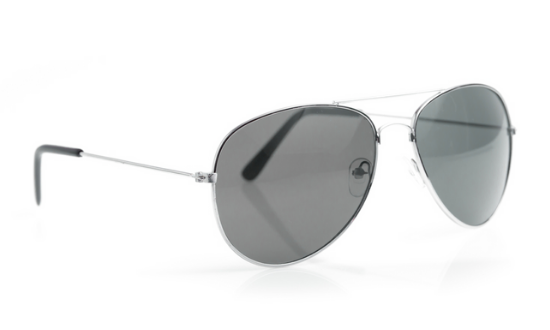
The only reason this color is most commonly used is its ability to absorb light. It provides protection to the eyes in bright sunlight. It allows all light waves to pass through the lens. Unlike yellow color, it does not change the contrast as such but in hot weather, Grey or a shade of black is much needed especially for 4 hours period of the day that is from 10:00 am to 4:00 pm time.
- Absorbs light
- Most suitable in a sunny environment
- Does not add contrast
- Vision remains same
Brown Color and Dark Amber

This color is brighter than the grey color. This stand-alone color is where the goodies of all the other colors roll into one. This multi-feature color is efficient in blue light protection as well it reduces glare to great extent. This makes them highly suitable for a cloudy atmosphere, or where the weather keeps changing. This is also beneficial in bright light as it also features in adding to color contrast hence visual acuity is also sharp. Color contrast is higher in Green backgrounds like hills or valleys or fields.
- Adds depth
- Reduces glare
- Better contrast
Green Color
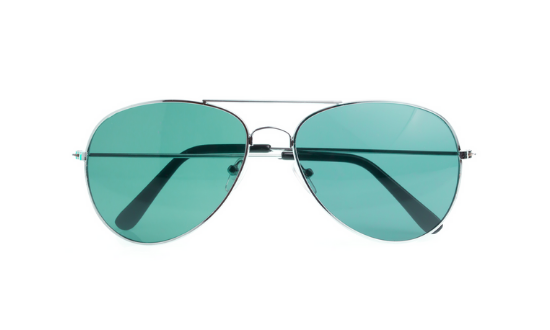
Green in particular has the benefit of both grey and brown color. While it reduces glare, it also adds to the sharpness of vision due to its high contrast. In intense light, it naturally provides cooling effects. The green color with polarize filers gives unbeatable comfort and sharp vision. Polarize filters blocks the dispersed light horizontally giving the best glare-free vision. These are good replacements for Grey and are well-liked by consumers. It is ideal for sunny, cloudy, and foggy environments. Hence this makes it a multipurpose color that can be worn by people with different needs and lifestyles.
- Reduces glare
- Better contrast
- Sharp vision
- Suitable for any environment
- Multipurpose
Blue color
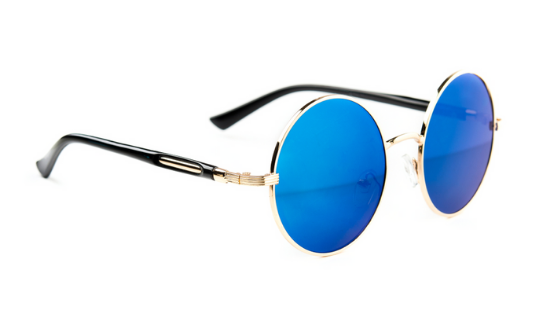
While blue color hits the fashion chart this color is more about styling. Although Blue color also prominently reduces glare but wearing it in bright light you might feel over brightness. These are best suggested in the cloudy, snowy, or sunset period of the day. Perfect for a Sunday brunch its cool effect adds the same to your styling. Blue colors are available in dark or SP tones to suit different kinds of environments.
- Fashionable
- Cool
- Reduces glare
- Suitable in cloudy, snowy, or sunset period
Summary
The human eye is made up of various small components, that depend on light rays to capture the most appropriate vision. The ophthalmic lens is very much an inspiration taken from the two vital parts of the eye; the Cornea and the Lens. The human eye anatomy is complex but interesting.
Since the purpose of the lens is to achieve the most accurate vision, the thing to remember here is that color lenses can reduce visual acuity when used as spectacle lenses. If you are opting to get power sunglasses they definitely provide you correct vision but the light transmission will be reduced due to the level of opacity.
Wearing sunglasses is vital to protect eyes from sunlight, UV light, Blue light, or dust particles. Keep at least two pairs of glasses to suit vision needs in different areas or time periods.
